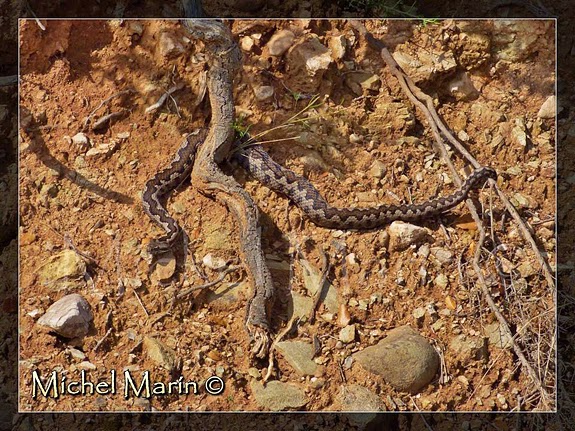




Forest canopy-dwelling frogs are usually among the rarest anuran species observed in the neotropical forest, mainly because they fall outside of the scope of the standard search methods used by herpetologists. During field explorations undertaken in western and eastern Panama in recent years, we discovered two species belonging to the genus Ecnomiohyla, which showed significant differences in genetic distances (16S mtDNA gene) and morphological characteristics different from any known Ecnomiohyla species. Leer más.
 | Unha vez acumulados os datos obtidos durante o ano 2.013 aos rexistrados ata decembro de 2.012, hai un total de 13.051 datos, aos que lle corresponden 4.320 datos non repetidos (33%). De anfibios obtivéronse 8.172 datos, dos cales 2.422 (30%) foron datos non repetidos, e de réptiles 4.879 datos totais aos que lles corresponden 1.898 datos non repetidos (39%). Leer más. |
 | Por fin, tras más de 15 años sin citas seguras, ha aparecido una víbora hocicuda (Vípera latastei) en las sierras de La Rioja baja. Y ha sido gracias a la colaboración de Michel Marín, un guarda forestal que encontró este precioso ejemplar macho, soleándose en mitad de un camino, a unos 900 metros de altitud en una zona de encinar y dentro de la cuadrícula WM86. Leer más. |
A new moderate-sized species of fringe-limb treefrog of the genus Ecnomiohyla is described from the Atlantic premontane slope of central Costa Rica. It differs primarily from other members of the genus in having the combination of cephalic and dorsal osteoderms, extensive digital webbing, a pointed prepollical bony projection in adult males, and the fleshy scalloped fringe on the hindlimb continuing across the heel. Additional material of the related but much larger species, Ecnomiohyla miliaria, is documented from localities of virtual sympatry for the two taxa. Leer más.






